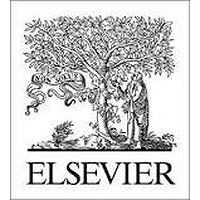Rationale: The Epilepsy Bioinformatics Study for Antiepileptogenic Therapy (EpiBioS4Rx) Centre without walls is an NIH funded multicenter consortium. One of EpiBioS4Rx projects is a preclinical post-traumatic epileptogenesis biomarker study that involves three study sites: The University of Eastern Finland, Monash University (Melbourne) and the University of California Los Angeles. Our objective is to create a platform for evaluating biomarkers and testing new antiepileptogenic treatments for post-traumatic epilepsy (PTE) using the lateral fluid percussion injury (FPI) model in rats. As only 30-50% of rats with severe lateral FPI develop PTE by 6 months post-injury, prolonged video-EEG monitoring is crucial to identify animals with PTE. Our objective is to harmonize the surgical and data collection procedures, equipment, and data analysis for chronic EEG recording in order to phenotype PTE in this rat model across the three study sites.Methods: Traumatic brain injury (TBI) was induced using lateral FPI in adult male Sprague-Dawley rats aged 11-12 weeks. Animals were divided into two cohorts: a) the long-term video-EEG follow-up cohort (Specific Aim 1), which was implanted with EEG electrodes within 24 h after the injury; and b) the magnetic resonance imaging (MRI) follow-up cohort (Specific Aim 2), at 5 months after lateral FPI. Four cortical epidural screw electrodes (2 ipsilateral, 2 contralateral) and three intracerebral bipolar electrodes were implanted (septal CA1 and the dentate gyrus, layers II and VI of the perilesional cortex both anterior and posterior to the injury site). During the 7th post-TBI month, animals underwent 4 weeks of continuous video-EEG recordings to diagnose of PTE.Results: All centers harmonized the induction of TBI and surgical procedures for the implantation of EEG recordings, utilizing 4 or more EEG recording channels to cover areas ipsilateral and contralateral to the brain injury, perilesional cortex and the hippocampus and dentate gyrus. Ground and reference screw electrodes were implanted. At all sites the minimum sampling rate was 512 Hz, utilizing a finite impulse response (FIR) and impedance below 10 K Omega through the entire recording. As part of the quality control criteria we avoided electrical noise, and monitoring changes in impedance over time and the appearance of noise on the recordings. To reduce electrical noise, we regularly checked the integrity of the cables, stability of the EEG recording cap and the appropriate connection of the electrodes with the cables. Following the pipeline presented in this article and after applying the quality control criteria to our EEG recordings all of the sites were successful to phenotype seizure in chronic EEG recordings of animals after TBI.Discussion: Despite differences in video-EEG acquisition equipment used, the three centers were able to consistently phenotype seizures in the lateral fluid-percussion model applying the pipeline presented here. The harmonization of methodology will help to improve the rigor of preclinical research, improving reproducibility of pre-clinical research in the search of biomarkers and therapies to prevent antiepileptogenesis.

Harmonization of the pipeline for seizure detection to phenotype post-traumatic epilepsy in a preclinical multicenter study on post-traumatic epileptogenesis
Review badges
0 pre-pub reviews
0 post-pub reviews








